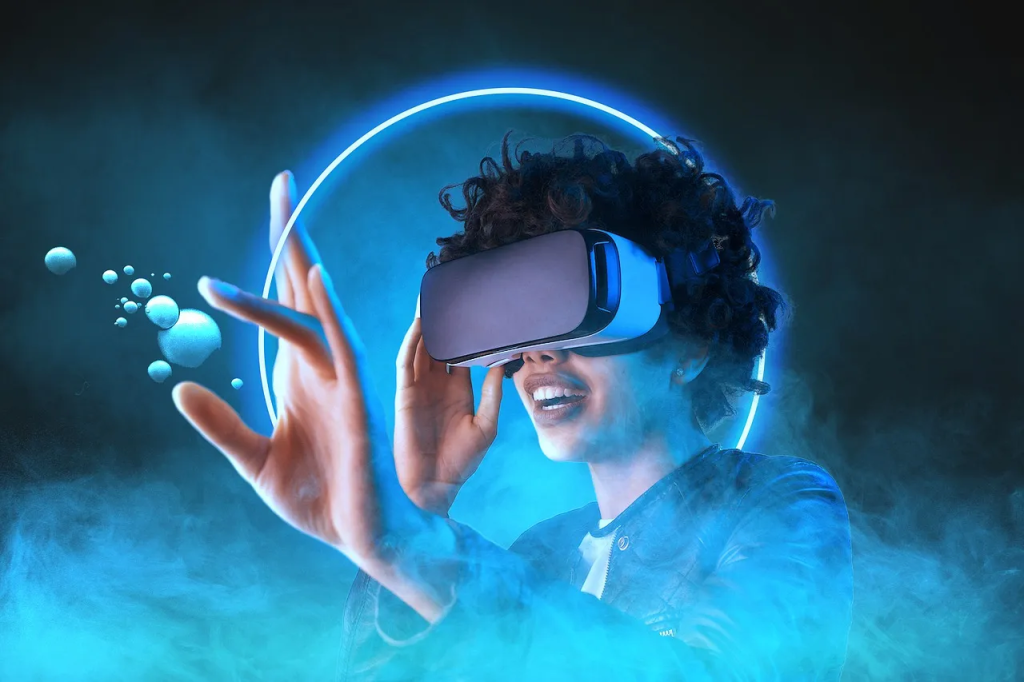
Introduction –
The metaverse, once seen as a futuristic concept confined to science fiction, is now becoming a commercial reality. Businesses are exploring how immersive technologies can redefine customer experiences, particularly in sales. The concept of immersive selling—using virtual, augmented, or mixed reality environments to engage buyers—has the potential to reshape how brands connect with customers. As organizations explore new ways to drive engagement and differentiation, the metaverse offers a powerful new channel that blends the physical and digital worlds.
Understanding Immersive Selling –
Immersive selling refers to sales interactions that occur in digital, three-dimensional environments where customers can explore, interact, and engage as if they were in a physical store. Instead of relying on traditional e-commerce interfaces, immersive selling uses technologies like VR (Virtual Reality), AR (Augmented Reality), and digital avatars to create rich, interactive experiences.
Key characteristics of immersive selling include:
- Virtual showrooms where buyers can examine products in 3D and interact with brand representatives.
- Personalized experiences using avatars or digital personas.
- “Phygital” experiences that blend physical and digital interactions, such as trying on clothing virtually or visualizing furniture in a customer’s home using AR.
- Social engagement, where multiple users can share and discuss products in real time.
These experiences go beyond visual appeal—they aim to simulate real-world engagement and emotional connection, leading to stronger customer relationships and higher conversion rates.
Why Immersive Selling Matters –
The rise of immersive sales experiences is driven by changing buyer behaviors and growing comfort with virtual interactions. In both B2B and B2C markets, customers expect personalized, interactive experiences rather than static presentations. Reports suggest that a significant majority of buyers now prefer virtual interactions over traditional face-to-face meetings.
Market growth potential is enormous. Analysts project that the metaverse e-commerce market will expand from around USD 66 billion in 2025 to over USD 1 trillion by 2034. This growth highlights a clear shift in how consumers perceive digital value and how businesses are leveraging immersive environments to build brand loyalty and increase sales.
Immersive selling also reduces friction in the buying process—customers can explore, compare, and customize products from anywhere, without travel or time constraints. For enterprises, this opens up global reach, deeper engagement, and more actionable customer insights through behavior analytics.
Key Use Cases in Metaverse Sales –
Several industries have already begun integrating immersive sales strategies into their operations.
- Virtual Showrooms and Stores –
Retailers and brands are creating 3D virtual stores where customers can browse products, interact with sales avatars, and make purchases—either for physical delivery or as virtual assets (such as NFTs). These experiences enhance engagement and replicate the feel of in-store shopping.
- Virtual Events and Product Launches –
Companies are hosting virtual product launches where participants join as avatars, view new items in 3D, and interact directly with brand representatives. This allows global participation without geographical limitations.
- B2B Virtual Sales Meetings –
In enterprise sales, virtual environments enable immersive product demos and collaborative discussions. Sales teams can present complex solutions, visualize product configurations, and engage clients in a way that traditional video calls can’t match.
Benefits of Immersive Selling –
Immersive selling delivers a range of tangible advantages for both sellers and buyers.
- Enhanced Customer Engagement: Immersive experiences create emotional connections and memorable brand interactions, improving customer satisfaction and retention.
- Global Reach: Virtual environments eliminate physical barriers, allowing global audiences to experience the brand simultaneously.
- Personalization and Data Insights: Businesses can capture detailed behavioral data, such as where customers spend time, what they explore, and what interests them most, enabling hyper-personalized sales strategies.
- Cost Efficiency: Virtual showrooms and meetings reduce travel costs, physical space expenses, and logistical challenges.
- Brand Differentiation: Early adopters of immersive selling gain a strong competitive edge and are perceived as innovators in their field.
The Future of Immersive Commerce –
The evolution of metaverse technologies points toward a hybrid future where physical and virtual commerce coexist. Buyers will explore products virtually, customize their selections, and complete transactions that blend real and digital experiences.
Emerging trends include avatar commerce, where users buy virtual goods for their digital identities; data-driven personalization, where AI analyzes virtual interactions to refine offers; and interoperable ecosystems, where users can carry digital identities and assets across platforms.
As these innovations mature, immersive selling will likely become an integral part of modern sales ecosystems—particularly in industries like real estate, fashion, technology, and manufacturing.
Conclusion –
Immersive selling within the metaverse is rapidly becoming the next frontier for digital commerce. It offers unparalleled opportunities for engagement, personalization, and global reach. However, success in this space depends on strategic planning, technological readiness, and alignment with customer needs.
Businesses that approach immersive selling as a meaningful extension of their sales strategy—rather than a passing trend—stand to gain a competitive advantage in the evolving digital marketplace. The future of sales is not just virtual—it’s immersive, interactive, and deeply connected to how buyers experience value.

